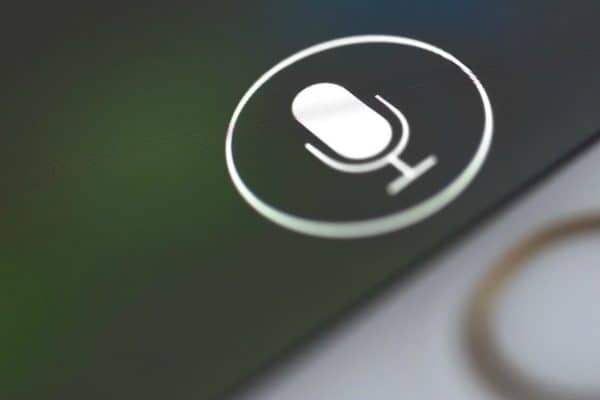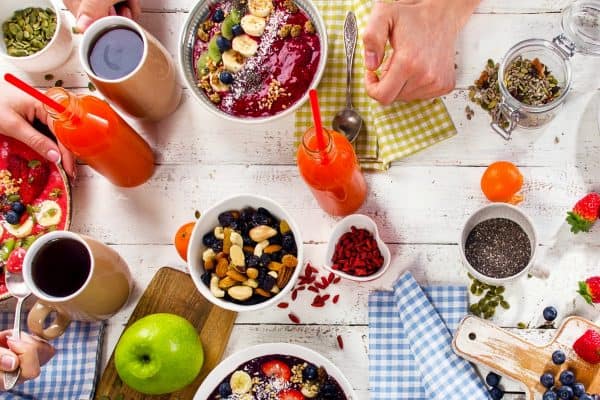If you’re trying to adopt a healthy lifestyle and eat more balanced meals, or want to make healthier food choices while saving money, there isn’t any need for your portions to shrink. As food costs rise, eating healthy on a budget can be challenging, but it’s possible to look after both your spending and healthy food without breaking the bank. We’ve put together the best tips for eating healthy on a budget to help you get the best of both worlds, as well as some great recipe ideas.
Healthy Budget Foods
While healthy eating has a reputation for being expensive, it doesn’t have to be this way. The Food Effect approach to healthy eating is all about enjoying plenty of simple, healthy, fat-burning foods that are great for you and good value, too.
Add these affordable healthy foods to your shopping list:
- Protein: eggs, meat, tuna, beans, lentils, tofu
- Dairy: yoghurt, milk, cottage cheese
- Grains: rice, pasta, oats, barley, couscous
- Fruits: bananas, apples, pears, grapes, oranges, frozen berries
- Vegetables: potatoes, carrots, squash, broccoli, cauliflower, onions, canned tomatoes, frozen peas
Of course, it’s all about eating in moderation and maintaining a balanced diet. Try to resist cutting back on protein and filling up on carbohydrates such as bread or pasta, as although cheaper, these can leave you feeling hungry, tired, and lethargic.
The 3 Ps For Eating Healthy On A Budget
Before going into our top tips, make sure to remember the 3 Ps for eating healthy, these are:
- Plan meals and snacks for the week according to your budget
- Purchase groceries when you’re not hungry or rushed
- Prepare meals in advance, bulk cook on days when you have time so you can easily have a healthy meal pre-prepped
Money Saving Tips For Eating Healthy
Knowing which foods are healthy is one thing, but applying that knowledge to help you save money is another. Here’s our top tips to ensure that you can eat right and save money:
1. Plan Your Meals
Try to plan the food for the week around budget-friendly ingredients or recipes. Check around the house to make sure you don’t already have the ingredients, and keep a shopping list with all the things you need written down. This makes sure you aren’t buying double, but also keeps you on-point with your plan and less likely to impulse-buy. This also helps to cut down on food waste as you know everything you buy will be used before it goes off.
2. Shop Seasonal
While healthy all year round, fruits and veg, and even some other produce, are tastier and cost less while in season, so it’s a great hack. You can always list your favourite produce this season and plan meals around it. For more, read about Why It’s Better For You And Your Wallet To Eat In Season.
3. Swap For Healthy Alternatives
On your shopping list, you can make easy and afforable swaps to eat healthier, including:
- Unrefined carbohydrates such as brown rice, whole-wheat pasta and whole-grain bread are far better options with very little difference in price.
- Healthy protein chicken and organic salmon can be too pricey, but eggs, tinned tuna, sardines, chickpeas, kidney beans, low-fat natural yoghurt, and cottage cheese are cheaper ways to get your fill of protein without compromising on quality.
- Healthy fats can be found in a handful of nuts, a tablespoon of peanut butter or a tin of sardines, none of which will break the bank. You can also find them in oily fish, like salmon, which can be on sale.
For more, check out our article on Easy Ingredient Swaps To Cut Cost, Not Nutrition.
4. Buy Frozen
Eating healthy on a budget doesn’t have to mean buying fresh, as these can go off with time and become a waste of money. To help things last longer without compromising on health, try buying frozen fruit and vegetables, and even some meats. Things like fish and chicken freeze very well, alongside the classics like peas, corn and even onions. These are just as nutritious and far cheaper.
5. Buy Own Brand Products
Most supermarkets have their own brands of foods, and they are very similar to the name brand so you aren’t sacrificing on quality. But these own brands usually are a lot cheaper than name brands so you can easily cut down a few ££ on your food shop every week.
Related: Supermarket Tricks And How To Avoid Them
6. Use Discounts & Loyalty Cards
While shopping, note any discounts or deals with healthy meals or ingredients, or if you can get eyes on the deals beforehand bring them into your meal planning for the week. Some supermarkets also offer loyalty cards to earn points which you can use to save money on shops, making it easier to buy healthy foods.
7. Buy In Bulk – But Only Items You Need
Buying food in bulk is a great way to eat healthy on a budget as these likely are cheaper than buying singles, and can save you money in the long run as you’ll be stocking up for less. But make sure that it’s what you need and that’ll you actually use it, otherwise you’ll just be overspending.
Related: Best Ways To Control Your Weekly Budget
8. Cook From Scratch Instead Of Going Out
One of the best ways eat healthy on a budget is to cook from scratch. This doesn’t have to be time-consuming, you can cook easy but healthy meals or choose to batch cook – Also known as the 3rd P, prepare. The weekends are a good time to prepare meals in advance and make a big batch of meals that you can pop into the fridge or freezer.
This can help you avoid going out, buying takeaways or ready meals, which can be unhealthy and more expensive. Instead, just take out a meal you made before. Great examples are breakfast muffins, curries, and even Asian classics like dim sum. For inspiration, check out our 5 Delicious And Cheap Meals You Can Batch Cook. Or if you’re in the mood for a takeaway, try our Cheap Fast Foods You Can DIY At Home.
9. Take Your Own Lunch
Eating healthy on a budget can also be made easier by bringing your own lunch. If you’ve premade a healthy meal, you can easily take leftovers from dinner in a tupperware for lunch instead of picking up a sandwich from a supermarket or deli. Plus, it’s likely to taste better than many of the healthier options in the classic meal deal.
10. Avoid Impulse Buys & Pack Snacks
During the day, avoid impulse buying snacks, which are probably unnecessarily expensive and pile on the calories. Instead pack fresh fruit (an apple in your bag travels well!) along with some raw nuts, which you can portion into mini tupperware or ziplock bags so that a whole big bag lasts you through the week. This portion control tip will help you avoid eating the big bag in one go (not very hard to do!), saving you both money and calories!
Budget-Friendly Healthy Recipes
Founder of The Food Effect, Dr. Michelle Braude shares some of his healthy super-saver meal and snacks to inspire your planning!
Related: We Ask Chefs For Their Favourite £5 Meals To Feed The Whole Family
Breakfast:
Scrambled Eggs on Toast
Spray a pan with oil and heat. Beat two eggs and cook until set, stirring constantly. Serve on 1-2 slices of whole-grain toast with some freshly sliced tomato.
Cinnamon Porridge
Cook 50g porridge oats in 1 cup of milk, until liquid has absorbed and porridge is cooked and thick. Serve with a drizzle of honey, a small handful of chopped nuts or seeds and a sprinkle of cinnamon.
Peanut Butter on Toast
Spread one slice of wholemeal toast with 1 Tablespoon of peanut butter and a drizzle of honey. Serve with fresh fruit such as an apple or pear.
Yoghurt with Berries and Seeds
One pot low-fat natural yoghurt (150g)
Served with: ½ cup mixed berries + 1 Tablespoon pumpkin/ sunflower seeds
Drizzle of honey (1 tsp.) + cinnamon

Lunch:
Cottage Cheese Salad
½ cup (~120g) low-fat cottage cheese
Mixed salad or vegetables (lettuce or spinach leaves, tomatoes, cucumber, grated carrot, red or yellow pepper) – seasoned with balsamic vinegar or lemon juice, salt, pepper
3 Ryvita crackers OR Brown Rice Cakes OR 1 slice whole-grain toast
Tuna & Sweetcorn Salad
½ regular size tin of tuna (in water/ brine) mixed with 1 Tablespoon low-fat mayonnaise
One small tin of sweet corn
Mixed salad or vegetables (lettuce or spinach leaves, cucumber, tomatoes, grated carrot, red or yellow pepper) – tossed with balsamic vinegar or lemon juice, salt, pepper
Soup and a Roll
Make your very own healthy soup (such as Carrot or Red Lentil Soup – Recipes can be found on the blog section at www.thefoodeffect.co.uk ) and serve with a small wholemeal roll and a green side salad.

Mackerel Salad
One tin of mackerel in tomato sauce
Mixed salad/ spinach leaves
½ red pepper sliced, chopped cucumber + 1 chopped tomato.
Seasoned with lemon juice, salt, pepper
Read more: From Bugs To Seaweed: Six Low-Cost 2017 Superfood Trends You Need To Know About
Dinner:
Vegetarian Roast Dinner
One vegetarian burger (e.g. Fry’s brand)
Roasted vegetables (e.g. courgettes, mushrooms, red peppers, red onions) cooked with olive oil or spray oil – seasoned with herbs, garlic powder, salt, pepper.
One small baked sweet potato (200g)
Pasta with Cottage Cheese
Whole-wheat pasta (70g uncooked)
½ cup low-fat cottage cheese
1 cup ready-made (jarred) tomato “Marinara” pasta sauce
Serve on top of large bowl of fresh spinach leaves OR steamed green beans or broccoli

Baked Sweet Potato with Tuna & Salad
Medium size baked sweet potato (200g)
½ tin tuna (in water/ brine) + 1 Tbsp. low-fat mayonnaise
Mixed green salad + diced tomato wedges (salt & pepper) – drizzled with balsamic vinegar
Chicken Dinner
1 Grilled chicken breast (150g) OR cooked/ roasted chicken thigh – NO SKIN
Steamed/ Roasted green beans/ broccoli/ cauliflower/ asparagus (season with garlic powder, herbs, salt, pepper) – unlimited
½ cup (cooked) brown rice OR ½ baked sweet potato
Snacks:
One large fresh fruit (e.g. apple or pear) + 2 Ryvita or oatcakes
1 large apple + 1 Tbsp. (15g) peanut butter
Two sticks of celery topped with 4 Tbsp. low-fat cottage cheese
One apple or pear + 1 handful (~12) raw almonds
1 mini-box (14g) raisins + 1 handful (~12) raw almonds/ cashew nuts
Small bunch red grapes (50g) + 12 almonds

2 tangerines/ plums + 1 handful (~12) raw almonds/ cashew nuts
Four dried apricots + 1 handful raw peanuts
One handful of raisins and pumpkin seeds
Pre-cut carrot sticks + 2 Tbsp. reduced-fat hummus
Two oatcakes with 2 Tablespoons low-fat cottage cheese + sliced tomato
2 brown rice cakes/ oatcakes + 1 Tbsp. (15g) peanut butter
2 cups low-fat (salted) popcorn
30g dark chocolate (anything 70% or above)
By: Dr Michelle Braude, founder of The Food Effect, www.thefoodeffect.co.uk
Twitter and Instagram: @thefoodeffectdr
https://www.instagram.com/thefoodeffectdr/
https://twitter.com/thefoodeffectdr
Facebook (The Food Effect Page): https://www.facebook.com/foodeffect
Eating Healthy On A Budget
Eating healthy doesn’t always mean you compromise on price, and spending less doesn’t have to mean low-quality meals. With our tips you can eat healthy and save money! Don’t forget to eat slowly to make every meal count to give your body time to feel full, this can help you save money and weight by preventing overeating. And lastly, drink plenty of water, can’t have healthy eating without proper hydration! For all things money-savvy and budget living, check out our Good Vibes blog for more helpful advice.



















